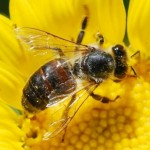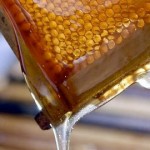Written by Ben Edington
For the home gardener who wants to experience a new hobby, why not try beekeeping? It is a unique and rewarding activity that can open one’s eyes to a whole new dimension to your garden while being rewarded with delicious honey.
The initial fear by most people when talking about honey bees is being stung. However, honey bees are quite docile and will only sting if threatened. A sting from a honey bee will end its life as the stinger left in the victim causes death to the bee and is only used as a last defense to protect its hive. Honey bees are more commonly mistaken for wasps and yellow jackets whose behavior is much more aggressive. Conversely, wasps and yellow jackets can sting multiple times.
The easiest way to begin beekeeping is by ordering a starter kit from a supplier. There are a variety of online sources that will sell you the tools, protective equipment, hive components and a manual to get started in a packaged set. As you move from a novice to experienced beekeeper, you may have to add to your equipment. After some initial assembling and painting you will be ready for the bees. Bees are usually ordered in winter and delivered in April or May as temperatures moderate. Simply place your bees inside their new hive and let them begin constructing their new colony.
The first year may require a little extra work getting your colony established. The bees are using a lot of energy constructing their new hive and the population of the hive is still developing. Their diet may need to be supplemented with sugar water to give them extra energy. The hive will need to be opened every few weeks to check the health of the hive. Do not expect to harvest any honey the first year as most of it will need to be left for the colony to get them through their first winter.
To read more about Honeybees and Your Garden see the full article in Planting Prose, the Mark M. Holeman, Inc. news magazine.


